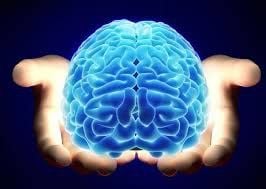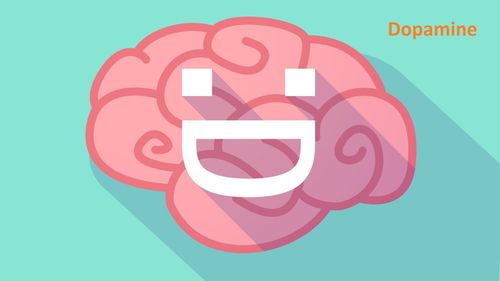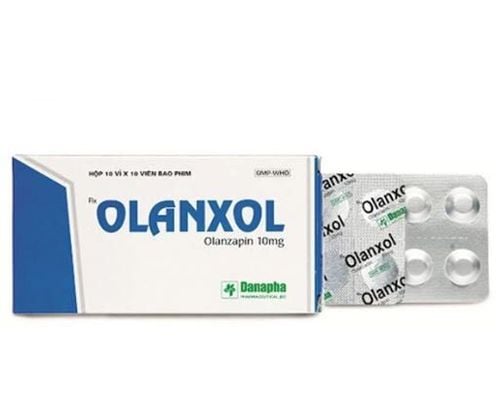This is an automatically translated article.
Schizophrenia is a mental disorder involving many complex mechanisms. One of these mechanisms is due to a disorder in the secretion of Dopamine - a neurotransmitter in the brain. Dopamine hypothesis is widely studied and applied in the treatment of schizophrenia.1. What is schizophrenia?
The 2 main symptoms of schizophrenia are delusions and hallucinations:In the case of paranoia, the person will strongly believe in the truth of things that those around them do not believe. A common delusion that a person with a mental disorder may have is believing that people are planning to harm them. In the case of hallucinations, the person will hear, see, and sometimes even smell, feel, or taste things that are not there. A common example of hallucination is hearing voices. When a person experiences delusions and/or hallucinations, they may become very distressed and may begin to change their behavior.
2. What causes schizophrenia?
Schizophrenia can be caused by a mental (psychological) condition, a general medical condition, or alcohol or drug abuse. The cause of schizophrenia can be a mental disorder caused by environmental stress and a combination of genetic factors.Schizophrenia can also be caused by a general health condition such as Parkinson's disease, malaria, multiple sclerosis or a brain tumor. Other causes include substance abuse such as drinking too much alcohol or taking drugs like cocaine, MDMA, or amphetamines.
Or the condition can also be triggered by suddenly stopping using drugs or drinking alcohol after using it for a long time. More rarely, schizophrenia can also manifest as a side effect of taking certain medications or taking an overdose.

Bệnh tâm thần phân liệt có thể do tình trạng tâm thần (tâm lý), tình trạng bệnh lý nói chung, hoặc lạm dụng rượu hoặc ma túy
3. The Dopamine Hypothesis
Scientists have done a lot of research on the effects of mental disorders on the brain and the brain changes that can cause psychotic episodes. They believe that the neurotransmitter dopamine plays an important role.A neurotransmitter is a chemical substance that nerve cells use to transmit information to other nerve cells or muscle or gland cells. Dopamine regulates many brain functions, with dopamine pathways regulating motor control, motivation, interest, reward, and activities such as walking and talking. Such impairment of brain functions may be the basis of psychotic symptoms.
The evidence that led researchers to hypothesize the “dopamine hypothesis” in conditions such as schizophrenia and bipolar disorder is based on several sources, including studies of brain scans and drugs that affect brain health. dopamine levels in the brain.
Dopamine hypothesis in schizophrenia Schizophrenia is the leading cause of psychiatric hospitalization and it accounts for even more among the permanent residents of such hospitals. It is a serious and often chronic condition that is associated with a greater degree of impairment and personality disorder than any other mental health condition. The main symptoms of schizophrenia include hallucinations, delusions, incoherent thought processes, decreased ability to feel normal, and detachment from reality.
Although understanding the neurobiology of schizophrenia remains a challenge, one feature that remains unchanged is the association of dopamine dysfunction.
Disruption to the dopamine system is the result of dopamine dysfunction in the following brain regions: striatum, prefrontal cortex, hippocampus, and hypothalamus.
In the case of schizophrenia, the dopamine hypothesis proposes that dopamine transmission is overactive in the mesolimbic regions and underactive in the prefrontal cortex. Dysregulation of dopamine is also seen in the amygdala, which is involved in emotional processing.
Some researchers have suggested that the dopamine system in the mesolimbic pathway may contribute to the 'positive symptoms' of schizophrenia (while problems with dopamine function in the mid-cortical pathway) may be responsible for 'negative symptoms', such as decreased activity and inability to speak). Abnormal expression, thus the distribution of D2 receptors between these regions and the rest of the brain may also be implicated in schizophrenia, especially during the acute phase.

Một số nhà nghiên cứu đã gợi ý rằng hệ thống dopamine trong con đường mesolimbic có thể góp phần vào 'các triệu chứng dương tính' của bệnh tâm thần phân liệt
Among the alterations of both synaptic and systemic structures, the most significant abnormalities were observed in the hippocampus and cerebral cortex. Their combination induces an asymmetry of the inhibitory signal in the prefrontal cortex, shifting the positive toward the dominant. Eventually, the gyrus becomes progressively atrophied forward, due to long-term depression (LTD) and prolonged electrochemical potential (LTP) from abnormally strong signals passing through the brain. This, combined with a relative deficiency in GABAergic input to Wernicke's region, shifts the balance of bilateral communication across the posterior organelle. Through this mechanism, hemispheric communication becomes highly displaced posteriorly to the left/dominant. Thus, spontaneous language from Broca can be transmitted through the limbic system to the tertiary auditory cortex. This retrograde signal to the temporal lobes leads to the parietal lobes not recognizing it as an internal result leading to the auditory hallucinations typical of chronic schizophrenia.
In addition, a significant decrease in cortical gray matter volume is observed in this disorder. Specifically, the right hemisphere was more atrophied, while both sides showed marked anterior and posterior volume reduction. This indicates that abnormal synaptic plasticity occurs, where certain feedback loops become strong, others receive less glutamatergic transmission.
Positron emission tomography (PET) studies have also discovered differences in the dopamine system in certain brain regions between schizophrenic patients and neuropsychiatric healthy individuals. In particular, the dopamine system is overactive in the hippocampus in patients with schizophrenia.

Hệ thống dopamine hoạt động quá mức ở hồi hải mã ở những bệnh nhân tâm thần phân liệt
4. Evidence for the dopamine hypothesis
Stimulants such as amphetamines and cocaine increase dopamine levels in the brain and can cause symptoms of psychosis, especially after large or prolonged use. This is commonly referred to as "amphetamine psychosis" or "cocaine psychosis", but can produce experiences that are virtually indistinguishable from positive psychotic symptoms. schizophrenic. Similarly, individuals receiving dopamine-boosting levodopa treatment for Parkinson's disease may experience psychotic side effects that mimic the symptoms of schizophrenia. Up to 75% of patients with schizophrenia have signs and symptoms of psychosis that increase when challenged with moderate doses of methylphenidate or amphetamine or other dopamine-like compounds, all of which are administered at controlled doses. Normal volunteers did not have any psychological effects.Several functional neuroimaging studies have also shown that, after amphetamine administration, patients diagnosed with schizophrenia have higher levels of dopamine release (particularly in the striatum) than those in the striatum. non-psychotic people. However, the acute effects of dopamine stimulants include euphoria, alertness, and overconfidence; These symptoms are more reminiscent of mania than schizophrenia. Since the 2000s, several PET studies have confirmed the possibility of altered dopamine synthesis in the nigrostriatal system demonstrating dopaminergic dysregulation.
A class of drugs known as phenothiazines, including antipsychotics such as chlorpromazine, have been found to antagonize dopamine binding (especially at receptors known as dopamine D2 receptors) and decrease positive psychotic symptoms. This observation was later extended to other classes of antipsychotics, such as butyrophenones including haloperidol. The link was reinforced by experiments in the 1970s showing that the binding affinity of antipsychotics for dopamine D2 receptors appeared to be inversely proportional to their therapeutic dose. This correlation, suggesting that receptor binding is causally related to therapeutic efficacy, was reported by two laboratories in 1976.
Genetic evidence suggests that there may be genes, or Specific variants of the gene, which code for the mechanisms involved in dopamine function, may be more common in people with psychosis or a diagnosis of schizophrenia. Dopamine-related genes that have been implicated in psychosis in this way include COMT, DRD4, and AKT1.

Các chất kích thích như amphetamine và cocain làm tăng nồng độ dopamine trong não và có thể gây ra các triệu chứng rối loạn tâm thần
Please dial HOTLINE for more information or register for an appointment HERE. Download MyVinmec app to make appointments faster and to manage your bookings easily.
References: webmd.com, ncbi.nlm.nih.gov, sciencedirect.com












